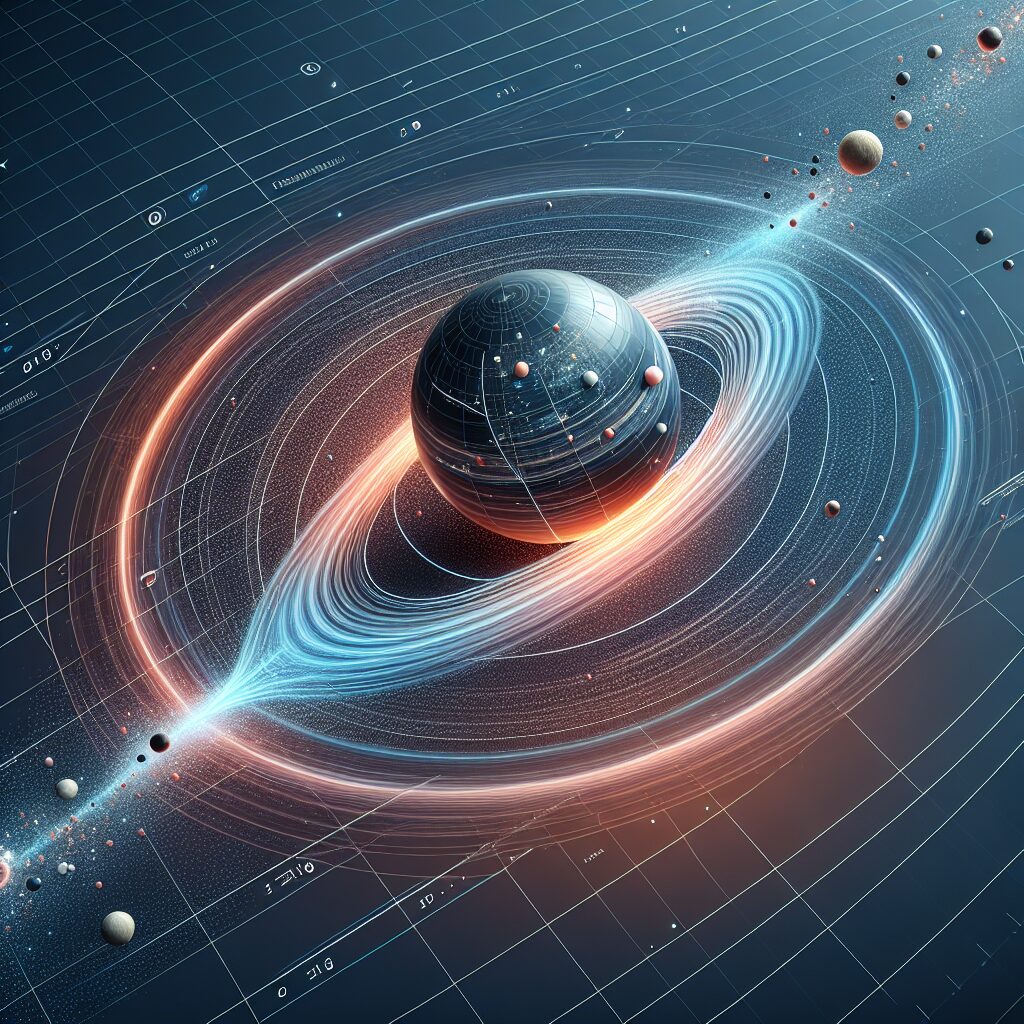Ball Physics Beyond Earth: A Cosmic Exploration
When we think of the physics of a ball, our minds typically conjure up images of sports and games played right here on Earth. However, what if I told you that the principles of ball physics can extend far beyond our planet’s atmosphere? Yes, you heard it right. Ball physics has become a fascinating area of study and experimentation in the realm of space exploration. As human beings continue to push the boundaries of our understanding and venture into the vastness of space, we uncover intriguing insights into how different gravitational forces and environmental conditions shape the behavior of balls in extraordinary ways.
One unique aspect of ball physics beyond Earth lies in the influence of microgravity. In the absence of Earth’s gravity or under significantly reduced gravitational forces found on other celestial bodies, the behavior of a ball takes on an entirely different dimension. Imagine a game of soccer on the Moon, where the gravity is only about one-sixth of what we experience on Earth. The way the ball moves, bounces, and reacts to players’ kicks would be dramatically altered. Such variations in gravity provide scientists and engineers with valuable insights into the physics of ball dynamics and open up new possibilities for designing sports equipment, recreational activities, and even robotic movements in extraterrestrial environments.
As we embark on this interstellar voyage exploring ball physics beyond Earth, we will delve into the key takeaways from recent research and experiments conducted in space. From examining the behavior of balls in microgravity environments to understanding the impact of different gravitational forces on ball dynamics, we will uncover fascinating insights that challenge our preconceived notions and offer potential applications for future space missions and technologies. So fasten your seatbelts and get ready to be captivated by the marvels awaiting us as we journey into the realm of ball physics beyond Earth.
Key Takeaways
1. Different types of balls behave differently in space due to the absence of gravity, with lightweight balls exhibiting erratic movement while heavier ones retain more stability.
2. The Japanese space agency, JAXA, is conducting experiments aboard the International Space Station to study ball behavior in microgravity, providing valuable data for future space missions.
3. The experiments involve testing various ball sizes, materials, and surfaces to understand their interaction with microgravity, enabling the development of safer and more efficient equipment for astronauts.
4. Understanding the dynamics of ball physics in space also has significant implications for sports activities and exercise regimens for astronauts, contributing to their overall well-being during extended stays in microgravity.
5. The research on ball physics beyond Earth not only has practical applications for space exploration but also offers insights into fundamental principles of physics that go beyond terrestrial settings, expanding our knowledge of the universe.
What is the Significance of Ball Physics Beyond Earth in Cosmic Exploration?
The Role of Ball Physics in Space
When it comes to cosmic exploration, studying ball physics may seem unconventional, but it holds immense significance in understanding the behavior of objects in space. The laws of physics apply universally, and investigating how balls behave beyond Earth’s surface can provide valuable insights into the fundamental principles governing celestial bodies.
Gravity and Floating Balls
One intriguing aspect of ball physics beyond Earth is the effect of gravity on the behavior of balls. On Earth, gravity’s pull ensures that balls are pulled downwards, but in space, microgravity conditions create a unique environment. Here, balls float effortlessly, defying the conventional notion of gravity. These floating balls offer a fascinating arena to study the influence of gravity and its absence on the movement and interactions of objects.
Ball Collision Dynamics
Studying ball collisions in space is of great interest for scientists and engineers. Beyond Earth, the absence of air resistance and other external factors allows for more precise exploration of collision dynamics. By modeling these interactions, experts can gain valuable insights into the energy transfer, rebound mechanisms, and trajectories involved in ball collisions in an environment without the constraints imposed by Earth’s atmospheric conditions.
Applications and Future Space Missions
The knowledge gained from exploring ball physics beyond Earth can have practical applications in space exploration. Understanding how balls behave in microgravity can aid the design of equipment, such as robotic arms and docking mechanisms, improving the maneuverability and safety of future space missions. Moreover, the study of ball physics can contribute to advancements in spacecraft navigation, providing accurate predictions of the motion of celestial bodies.
Challenges and Experimentation
Conducting experiments related to ball physics beyond Earth poses its own unique set of challenges. The absence of atmospheric drag and the need for specialized equipment require researchers to design innovative experiments that simulate microgravity conditions. Technologies such as drop towers, parabolic flights, and even the International Space Station are utilized to carry out experiments aimed at investigating different aspects of ball physics in space.
Guides for Conducting Ball Physics Beyond Earth Experiments:
- What are the key considerations in designing experiments related to ball physics in microgravity environments?
- How can scientists create a miniature version of microgravity conditions on Earth to carry out preliminary experiments?
- What techniques can be employed to analyze ball collision dynamics beyond Earth?
- What advancements in space technology are expected to enhance future investigations of ball physics?
Frequently Asked Questions
1. What is Ball Physics Beyond Earth: A Cosmic Exploration?
Ball Physics Beyond Earth: A Cosmic Exploration is a groundbreaking study that investigates the behavior and properties of balls in space or beyond Earth’s atmosphere. It explores how the laws of physics apply to balls in environments with different gravity conditions.
2. Why is studying ball physics beyond Earth important?
Studying ball physics beyond Earth helps us gain a deeper understanding of the fundamental principles that govern object motion in unique gravitational settings. This knowledge can have practical implications in designing sports equipment, spacecraft, and even predicting celestial body movements.
3. How does the behavior of balls differ in space compared to Earth?
Without the influence of Earth’s gravity, balls in space exhibit different behaviors. The absence or reduced gravity affects factors like the trajectory, velocity, and bounce of balls. These factors arise from alterations in the forces acting on the ball, making their behavior distinct from what we observe on Earth.
4. Can studying ball physics in space benefit sports technology?
Definitely! Understanding how different gravity conditions affect ball behavior can help sports technologists design better equipment. This knowledge can ultimately enhance sports performance, improve safety, and lead to the development of innovative equipment for various sports.
5. Are there any real-world applications for ball physics beyond Earth?
Absolutely! The study of ball physics beyond Earth has profound implications for space exploration. By comprehending the dynamics of ball motion in varying gravity environments, scientists can improve navigation and propulsion systems for spacecraft, leading to more efficient and precise space missions.
6. How does the concept of ball physics beyond Earth relate to astrophysics?
Ball physics beyond Earth connects to astrophysics as it involves studying the behavior of objects in space. Both fields explore how the laws of physics apply to celestial bodies and other objects under different gravitational forces, providing valuable insights into the mechanics of the universe.
7. Can studying ball physics beyond Earth help us understand planetary movements?
Indeed! By investigating ball physics beyond Earth, we can gain a better understanding of the forces influencing the motion of planets and other celestial bodies. This knowledge contributes to our comprehension of planetary motion and has applications in fields such as astronomy and spacecraft trajectory calculations.
8. Who conducts research on ball physics beyond Earth?
Researchers from various fields, including astrophysics, physics, sports science, and engineering, are involved in studying ball physics beyond Earth. These experts collaborate to uncover insights into the behavior of balls and objects under diverse gravitational conditions.
9. Are there any ongoing experiments or missions related to ball physics beyond Earth?
Yes, there are several ongoing experiments and missions related to ball physics beyond Earth. Space agencies like NASA and private companies are conducting experiments aboard the International Space Station (ISS) and launching satellites to study ball behavior in microgravity environments.
10. How can the findings of ball physics beyond Earth impact future space missions?
The findings of ball physics beyond Earth can have a significant impact on future space missions. By better understanding how objects behave in varying gravity conditions, scientists can improve mission planning, spacecraft design, and navigation systems, leading to safer and more efficient space exploration.
Final Thoughts: Ball Physics Beyond Earth: A Cosmic Exploration
Ball Physics Beyond Earth: A Cosmic Exploration represents a captivating frontier of scientific research that melds the realms of sports, astrophysics, and engineering. Through its exploration of object behavior under different gravity conditions, this field opens up new possibilities for innovation, technological advancements, and a deeper understanding of our universe.
With ongoing experiments and missions, the grasp of ball physics beyond Earth steadily expands. The knowledge gained from this study not only enhances sports technology and space exploration but also illuminates the fundamental laws that govern motion and forces, elevating our overall comprehension of the cosmos.




